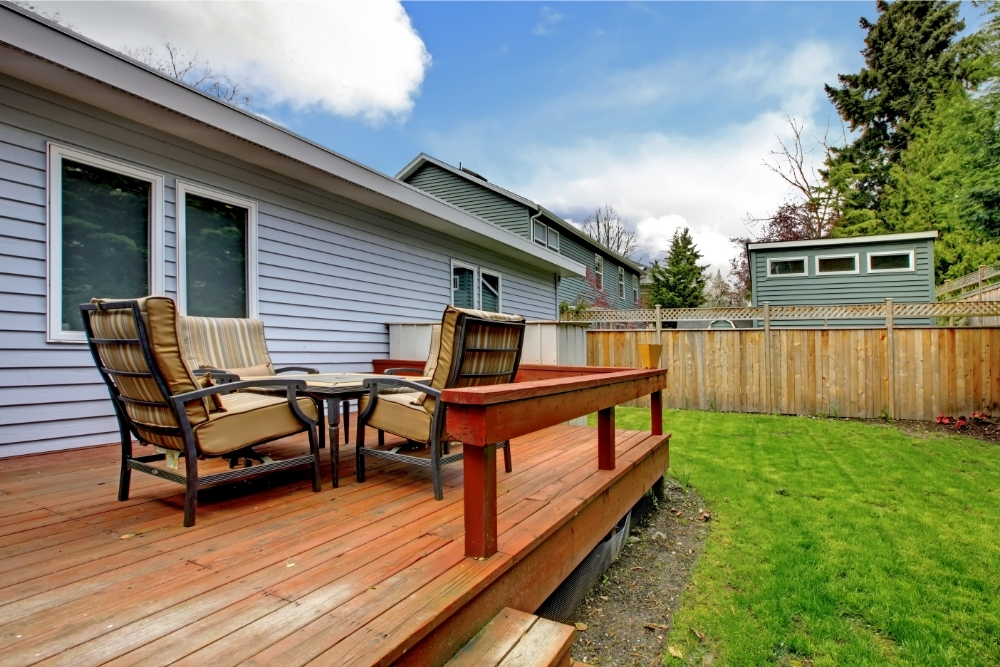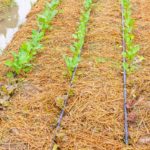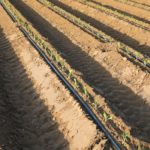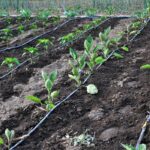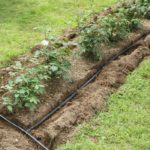Drip irrigation is often said to be the most efficient way to distribute water in your garden. However, when setting up a drip irrigation system, many people get stuck at the exact same question: Where should the drip emitters be placed?
It’s recommended to place at least one drip emitter at least 6 inches away from the base of each plant. Your goal should be to find a placement that will water both the plant and its roots, so don’t place the emitters right next to the plants. You should use more than one emitter for larger plants.
Setting up a drip irrigation system can be a pretty confusing process, so let’s break it down into the basics. We’ll take a closer look at drip emitters, including what they are, where to put them, and whether you can bury them.
What Are Drip Emitters?

Drip emitters (on Amazon) are little devices that drip water directly onto the roots of your plants. The main idea behind using drip emitters is that they work to conserve as much water as possible. Because drip emitters drip the water instead of spraying, you end up using much less water. This also results in you less water loss due to things like evaporation, runoff, and wind.
It’s important to realize that drip emitters don’t run on their own. You will need to set up zoning for your drip system as well as pressure regulators (on Amazon) for the system to run properly. Zoning involves separating your plants into zones based on their watering needs.
For example, if you have dry climate plants, these need less water than wet climate plants. That means that you’ll want to have your dry climate plants zoned with your wet climate plants.
Pressure regulators do exactly what they say they do — they regulate the pressure in your system. Regulating the water pressure in your drip irrigation system is vital as this controls the current at which that the water drips out.
If your pressure is too high, your water will spray out like a hose. If your pressure is too low, your water will drip way too slowly. Installing pressure regulators is a vital step in any drip irrigation system.
Where Should You Put Drip Emitters?
It’s recommended that you place drip emitters at a minimum of six inches from the base of the plant. Remember that your goal is to hit both the plant and its roots, so simply placing the emitter right next to the plant won’t be your best option.
A minimum distance of six inches away from the base of the plant should allow the water to hit both the plant and its roots under the soil.
Another common question is how many drip emitters you should use per plant. A good rule to follow is that you should go for at least one drip emitter per plant in your garden. Some people even recommend having more than one per plant; that way, if one of your drip emitters ends up getting clogged, the plant won’t die.
This is especially good for larger plants that need more water. With smaller plants, however, this may result in overwatering, so do your research and be careful with the number of emitters you use.
When using multiple drip emitters on one plant, you’ll still want to stick to this distance of six inches away from the base of the plant. However, you don’t really want to have two drip emitters right next to each other.
When you’re using more than one drip emitter on the same plant, try putting them in different spots to make sure you’re covering the plant’s entire root system.
For example, if you already have one drip emitter six inches away from the plant on its left side, try putting the second one six inches away on the plant’s right side. This will make sure that you get water in all of the places that you need to.
Can Drip Emitters Be Buried?

You shouldn’t bury drip emitters. Burying them can lead to them becoming clogged, which will result in your plants not getting enough water. It’s possible to bury your drip irrigation tubing under the ground, but this is generally not recommended. The weight of the soil will press against the tubing and can cut off the water flow.
If you really want to cover up your drip irrigation tubing, you can cover it with a thin layer of mulch. Mulch doesn’t weigh as much as a full layer of soil, and it will further work to protect your water from evaporation as well as runoff and wind.

